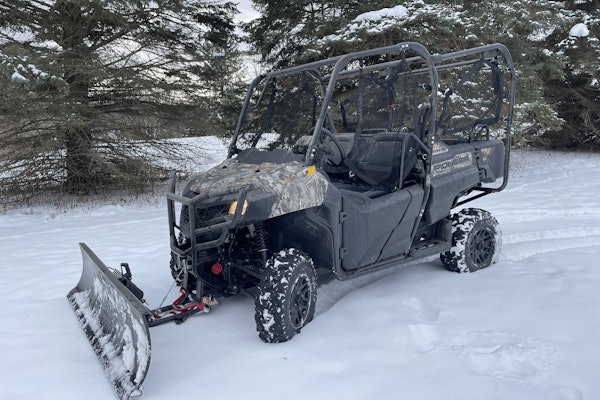Slow down. Stay Alert. Obey the law.
These are just a few of the suggestions being made for safe driving during National Work Zone Awareness Week, which began April 3 and concludes April 9. The campaign is attempting to increase public awareness of work zone safety by bringing to the attention of the motoring public the fact that nearly 900 men, women and children are killed in work zones each year.
The American Traffic Safety Services Association, U.S. Department of Transportation and American Association of State Highway and Transportation Officials are joint sponsors of the annual campaign that provides tips and holds events to reduce the number of work zone fatalities, which have increased 50 percent from 1997 to 2003, according to the Federal Highway Administration.
Dave Bauer, senior vice president of government relations for the American Road & Transportation Builders Association, said the difficulty in reaching the driving public means a variety of communication methods need to be used. He said the simplest message for the driving public in preventing work zone deaths is to use their brakes.
“Getting people to slow down is one of the most significant things that can be done,” Bauer said.
To communicate this and other safety messages, ARTBA is managing the National Work Zone Safety Information Clearinghouse. Based at the Texas Transportation Institute in College Station, it is the world’s largest Internet resource on road construction zones, handling more than 80,000 information requests annually.
ARTBA state chapters have pushed for public information campaigns, such as work zone awareness billboard messages in Pennsylvania and Tennessee. The organization is also working to create a driver safety education video similar to those already being used in many states.
Bauer said these types of communication, in addition to work-zone safety related legislation being proposed in Congress, could help reduce the number of public and construction worker deaths.
Some of the proposed legislation allocates funding for public education campaigns and for off-duty police officers to patrol work zones. But Bauer said legislation can only do so much.
“It’s pretty hard to legislate behavior,” he said. “We try to throw out a variety of information to ensure everyone is being educated.”
FHWA’s tips for driving safely in work zones
- Expect the unexpected — (Normal speed limits may be reduced, traffic lanes may be changed and people may be working on or near the road.)
- Slow down. (Speeding is one of the major causes of work zone crashes.)
- Don’t tailgate. Keep a safe distance between you and the car ahead of you. (The most common crash in a highway work zone is the rear-end collision, so leave two car lengths between you and the car in front of you.)
- Keep a safe distance between your car and the construction workers and their equipment.
- Pay attention to signs. (The warning signs are there to help you and other drivers move safely through the work zone. Observe the posted signs until you see the one that says you’ve left the work zone.)
- Obey road crew flaggers. (The flagger knows what is best for moving traffic safely in the work zone. A flagger has the same authority as a regulatory sign, so you can be cited for disobeying his or her directions.)
- Stay alert and minimize distractions. (Dedicate your full attention to the roadway and avoid changing radio stations or using cell phones while driving in a work zone.
- Keep up with the traffic flow. (Motorists can help maintain traffic flow and posted speeds by merging as soon as possible. Don’t drive right up to the lane closure and then try to barge in.)
- Schedule enough time to drive safely, and check updated traffice information. (Expect delays and leave early so you can reach your destination on time. Check the National Work Zone Safety Information Clearinghouse for information on work zone delays throughout the country.)
- Be patient and be calm. (Work zones aren’t there to personally inconvenience you. Remember, the work zone crew members are working to improve the road and make your future drive better.)
Patrick Beeson can be contacted at [email protected].









